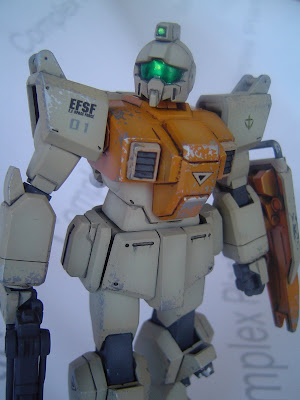Yes gundam stickers do have a valid use! I used them to make an exaclty fitting painting mask for the visor on my model. I simply laid in onto some Tamiya masking tape and cut carefully around it.
It fitted perfectly onto the visor on the head nicely masking it for the following paint job.
I masked the camera ports with Tamiya tape by placing it onto the part then using a toothpick to burnish in the shape. A sharp hobby blade then bing used to cut out the shape.
I decided to start off a little differently on this model. I dispensed with the grey laquer primer and primend the entire kit with Tamiya Titanium gold instead.
I read somewhere that Gundams were made of Gundamium metal.... something differently ficticious so Tamiya Titanium gold might well represent that futuristic different metal.
This is quite a cool metallic colour and will really look different showing through the paint in the chipped areas. (Hopefully)!
To be continued....
The Newbie Stash
11 months ago






































+001.JPG)













